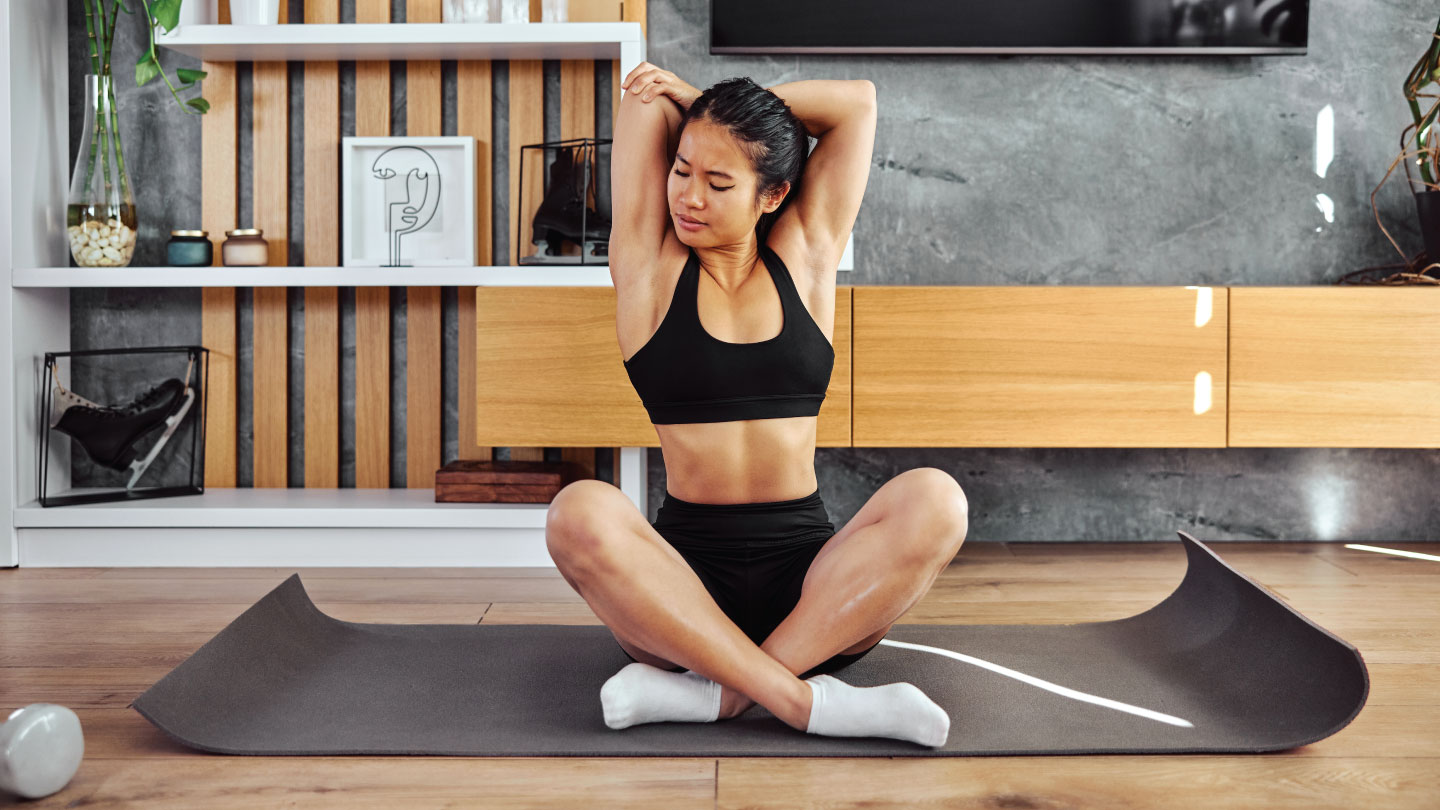Movement
Easy Guide To Injury-Free Yoga Practice
Yoga is one of the best forms of exercise to beat stress and recharge your body and mind. However, poor form can make things worse. Here's how to perfect these basic yoga moves without any injuries.
What makes yoga a millenia-old go-to when it comes to physical and mental well-being? In a 2011 paper published in the International Journal of Yoga, it was concluded that yoga can enhance "muscular strength and body flexibility, promote and improve respiratory and cardiovascular function, promote recovery from and treatment of addiction, reduce stress, anxiety, depression, and chronic pain, improve sleep patterns, and enhance overall well-being and quality of life". It is an all-rounder that improves your mind, body and soul and accelerates muscle recovery through stretches and breathing exercises. What's more, there's no age limit when it comes to reaping these benefits.
However, yoga can also lead to joint pain, muscle sprain and other unwanted injuries— mostly due to prior injuries, overexertion and incorrect form and posture. Mumbai-based yoga therapist and director of Shammi's Yogalaya, Shammi Gupta demonstrates six common asanas and how to prevent yoga injury. Most of these are part of the Surya Namaskar or Sun Salutation sequence, which is a quintessential and power-packed yogic exercise routine.
Related Story: A Day At The Picnic—Fun And Interactive Yoga Session For Kids
1. Shoulder placement in Urdhva Hastasana: Urdhva Hastasana or the Upward Salute Pose is a stretch which is usually performed as a part of a Surya Namaskar or Sun Salutation. It is known to relieve fatigue and anxiety and involves standing or sitting straight while stretching your arms upwards and joining them above your head. However, Gupta suggests that squeezing your shoulders into your neck while raising your arms can cause cervical spondylosis. Instead, move your shoulders away from each other and open up your chest for a full stretch.
2. Maintaining a neutral spine: A neutral spine, or simply your spine in its undisturbed and natural state, is indispensable for yoga. A poor posture or a bent spinal position can give rise to back pain, and can affect the position and function of your abdominal organs, inhibit breathing and oxygen intake, cause headaches and affect mood, says Harvard Health Publishing. To maintain a neutral spine, Gupta suggests tucking the areas below your navel and your chest inwards, especially while performing a seated asana.
Related Story: Better Posture, Better Back: Yoga for a Healthy Spine
3. Hand placement in Downward Dog: Adho Mukha Svanasana or the Downward Dog pose is a popular stretch that works your leg muscles as well as strengthens your shoulders. To perform this, get into a plank position and lift your hips as high as possible, with your head facing downwards. A quick note from Gupta—keeping your fingers clasped together while performing this asana can cause wrist pain. To avoid this, "press the heels of your palms on the floor with your fingers spread apart".
4. Weight placement in Downward Dog: Apart from hand placement, weight distribution also plays a key role in the effectiveness of the Downward Dog pose. "Do not shift your body weight to the front," says Gupta. To prevent further wrist strain, focus your weight on your thighs and heels instead.
5. Range of motion in Paschimottanasana: Paschimottanasana or the Seated Forward Bend is a fundamental asana for any yogi. It involves sitting with your legs extended, as you extend your arms and bend forward as far as possible. Try to reach your toes as you feel a stretch in your calves, hamstrings and lower back area. Gupta suggests that you shouldn't bend your upper-back first, as it can reduce your range of motion. For maximum flexibility, open up your chest, and begin bending forward hip first as you look upwards and try to touch your toes. At your full extent, touch your elbows to your legs and lower your head down as far as possible.
6. Neck placement in Bhujangasana: Another star of the Sun Salutation, Bhujangasana or the Cobra Pose is an incredible spinal stretch that not only improves your posture but also relieves stress, stretches the chest and lungs as well as stimulates the organs in the abdominal area (International Journal of Trend in Scientific Research and Development, 2019). As the name suggests, Bhujangasana means imitating a snake-like posture as you lay on the ground face-first and raise your upper body with your arms until you feel a comfortable stretch in your spine. However, trying to bend your spine by throwing your head backwards can contribute to neck pain. Hence, Gupta recommends fixing your gaze in front of you.
Related Story: This or That: Should You Be Perfecting Your Yoga Asanas or Getting Into the Pilates Groove?
EXPLORE MORE
Simple, practical fitness advice to help you feel stronger, healthier, and more consistent in 2026.
Callisthenics isn’t about flashy Instagram moves or avoiding the gym. According to celebrity fitness and lifestyle coach Krishna Sadvale, it’s one of the most practical ways to build strength, control, and confidence in your own body.
A home-based yoga routine can elevate energy, sharpen focus, and nurture mental calm. Discover why it’s worth starting now.
Your posture is whispering a story about stress, screens, and slouching. Here are 6 exercises you must try!






.jpg)
.jpg)


